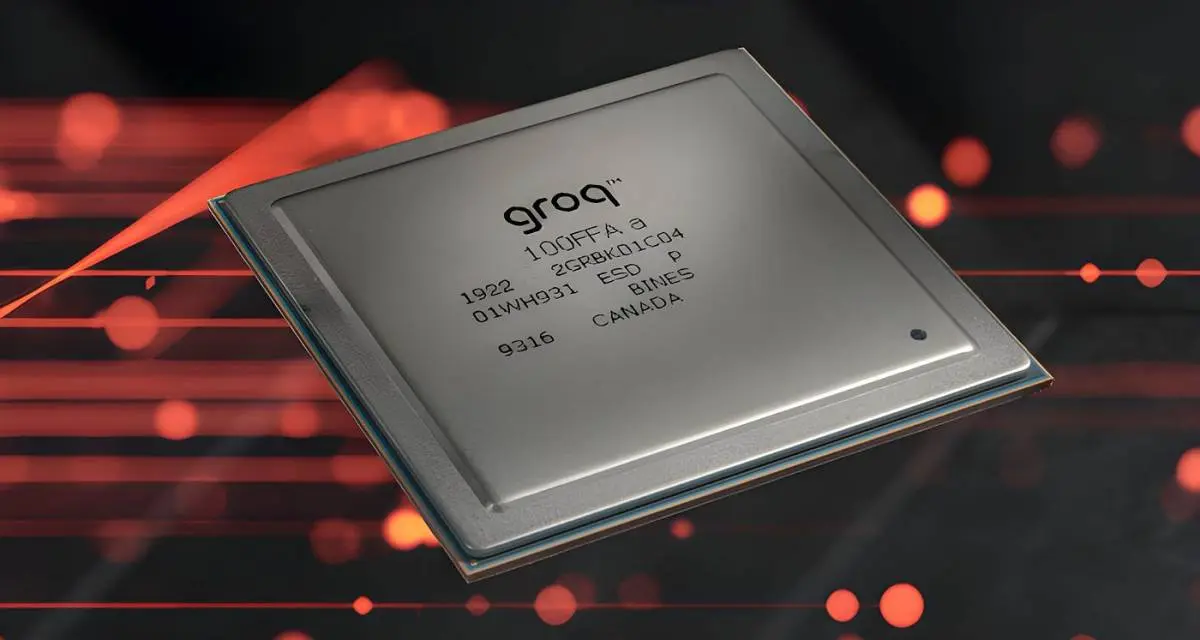Navigating the World of Synthetic Data: Methods, Applications, and Business Implications
2 Sources
2 Sources
[1]
Council Post: Navigating Three Types Of Synthetic Data: Methods And Applications
Synthetic data generation has emerged as a crucial technique for addressing various challenges, including data privacy, scarcity and bias. By creating artificial data that mimics real-world datasets, organizations can develop and test their models more effectively and securely. Given the importance and relevance that data has gained for organizations in the past decades, any type of data has become central to a successful data-driven approach, which also includes the need for synthetic data. Even though the concept of synthetic data is simple, synthetic data is an umbrella term. It includes different ways and methods to generate artificial data that can offer different advantages and benefits when it comes to data availability, scarcity or even when privacy-preserving access to data is a requirement. Based on my expertise, I like to classify synthetic data into the following three primary types: fake or rule-based generation, simulations and, last but not least, data-driven generation through generative models. This is probably the most widely known as well as the most commonly used data: fake or rule-based generated data. It is created by defining rules that mimic the characteristics of original data, such as value distributions and statistical properties. This method is commonly used to generate simple datasets for software development and testing, ensuring that no sensitive information is exposed since the data has no ground truth. In the financial services industry, for example, rule-based synthetic data helps develop and test software applications without regulatory challenges. By replicating the structure and volume of real financial data, institutions can ensure safe and efficient systems software development and testing without risking data breaches. While easy to implement, understand and customize, this approach lacks the complexity and variability of real-world data. Furthermore, it can become time-consuming and complicated to define comprehensive rules. Simulation-based data generation creates synthetic data by mimicking real-world processes using mathematical or computational models. This approach is useful when processes are well understood, allowing for efficient data generation under various scenarios. A great example of how simulated data is being used is in the healthcare industry. It helps develop and test diagnostic tools and treatment protocols, especially for rare diseases with scarce real patient data. Simulated data can mimic patient demographics and medical histories, enabling extensive testing of predictive models in a controlled environment. Data-driven generation synthetic data generation uses machine learning models -- particularly generative models like generative adversarial networks (GANs) and variational autoencoders (VAEs) -- to create synthetic data that statistically resemble real data. These models preserve privacy by generating data with no one-to-one match to real observations and are suitable for analytics and AI model training. The process helps address data scarcity, variability and bias by capturing complex patterns without human intervention. This method requires ground-truth data for training, appropriate model selection (e.g., for text, time-series, images or structured data) and optimization based on data characteristics. Although it demands an understanding of generative models, how they work and their limitations, its benefits are significant, given their ability to capture complex patterns and data dependencies without human intervention. For instance, in e-commerce, this type of data enhances recommendation systems by training algorithms on diverse, realistic datasets without compromising customer privacy. The approach also ensures better personalization and an improved shopping experience while maintaining data privacy and regulatory compliance. The advent of advanced language models like ChatGPT has opened new possibilities for synthetic data generation, but also some misconceptions about what synthetic data is. In some publications and articles, you may find the term "synthetic data" as any outcome that is generated by an LLM. Though one can understand why they say this, this can lead to confusion because it does not mean that the outcome of an LLM is meant to be used for the benefits above mentioned (privacy, de-biasing, data scarcity, etc.) LLMs can be used to generate text data, such as customer service interactions, medical notes and legal documents. As I've written about previously, LLMs can generate realistic and contextually accurate text data by training on a large corpora of text. The data generated by these models is complex, diverse, contextually rich and easy to generate at a distance of a few prompts. Despite its ease of use and language-based interface, these models need to be fine-tuned when it comes to the generation of industry and domain-specific data. On the other hand, for structured data types, LLM-based synthetic data generation struggles to generate sets of data that can replicate all the complex relationships between variables as well as specific business rules and dependencies. This makes them more difficult to use when it comes to generating data tables -- not to mention the challenge of hallucinations. Therefore, synthetic data generated by LLMs is more similar to fake data when it comes to structured data, requiring careful validation and oversight to ensure data reliability. Synthetic data generation is a versatile and powerful tool that addresses many challenges associated with real-world data. Whether through fake or rule-based generation, data-driven generative models, simulations or advanced language models like ChatGPT, synthetic data provides valuable opportunities for innovation and development across various industries. Each method has its strengths and weaknesses, and the choice of technique depends on the specific requirements and constraints of the application. As synthetic data generation technology continues to evolve, it promises to unlock new potentials and drive advancements in data science and artificial intelligence. Forbes Technology Council is an invitation-only community for world-class CIOs, CTOs and technology executives. Do I qualify?
[2]
Council Post: What Kind Of Synthetic Data Should My Company Use?
In today's data-driven world, enterprises face an ever-growing demand for data to fuel their operations, from testing to machine learning and AI. Yet, collecting high-quality, diverse and privacy-compliant data remains a formidable challenge. For that reason, synthetic data technology is reshaping the landscape of data management governance, analytics and AI. In this article, I cover the types of synthetic data that exist, with a special focus on AI-generated data and its subcategories. Synthetic data is artificially generated data, or fake data. Unlike data derived from actual events or transactions, synthetic data is created by humans or through algorithms and models that simulate realistic data points. Synthetic data addresses data scarcity, enhances privacy and reduces the costs associated with data collection and labeling. Moreover, synthetic data can balance datasets by generating underrepresented scenarios, ultimately leading to more robust and unbiased machine learning and AI models. Synthetic data can be categorized into three primary types: 1. Dummy/Mock (Human-Engineered) Data: This type of data is manually created to simulate real-world data. It's often used in software testing and development to create predictable, controlled scenarios. Although useful for initial testing phases, human-engineered data can lack the complexity and variability needed for advanced analytics and machine learning. 2. Simulation (Physics-Based) Data: Generated through simulations based on physical models and equations, this data type is prevalent in industries like automotive, aerospace and healthcare. For instance, simulations of crash tests or the human body's physiological responses can produce data that would be difficult, expensive or unethical to collect in real life. 3. Data-Driven (AI-Generated) Synthetic Data: This data is produced by algorithms and machine learning models, either pre-trained or trained on proprietary data. AI-generated synthetic data can closely mimic the statistical properties of real-world data, making it highly valuable for a wide range of applications, from training machine learning models to augmenting datasets for analytics. As enterprises increasingly adopt synthetic data, understanding the distinctions between data generated by pre-trained models like GPT (generative pre-trained transformer) and generative models trained on proprietary data is crucial. These differences can significantly impact data quality, privacy and usability. Pre-trained models like GPT are built on vast datasets encompassing diverse domains and languages. These models excel in generating human-like text and are highly effective in scenarios requiring general-purpose data generation. Their advantages include: * Versatility: Pre-trained models can generate data across various domains without requiring domain-specific training. * Privacy Assurance: Because pre-trained models don't use proprietary data, they also don't pose privacy concerns related to sensitive information. * Customization Capabilities: These models can be fine-tuned and adapted to specific enterprise needs, offering a high degree of flexibility. However, this is complex, costly and can increase the risk of privacy exposure. Their disadvantages include: * Cost-Effectiveness: Utilizing pre-trained models can be expensive, especially when licensing fees or computational resources are considered. * Data Quality: Pre-trained models lack the knowledge of a company's proprietary data. Hence, the generated data won't mimic the real-world behavior of the organizations' data. Proprietary models, trained on an organization's specific datasets, offer a tailored approach to synthetic data generation. These models are designed to understand and replicate the intricacies of proprietary data, helping ensure high fidelity and relevance. Their advantages include: * Domain Specificity: Proprietary models are fine-tuned to an organization's unique datasets, producing highly relevant and accurate synthetic data. * Privacy Control: Although proprietary models are trained on real data, they can offer privacy controls to manage sensitive information appropriately. * Cost Efficiency: Contrary to common belief, small generative models can be cost-efficient, as they eliminate the need for extensive data collection and labeling. * Ease Of Maintenance: These models aren't necessarily resource-intensive or difficult to maintain, especially when acquired from specialized vendors. Their disadvantages include: * Complexity: The technology behind proprietary models is complex, making it challenging for enterprises to develop these models in-house. * Vendor Dependency: Due to the complexity, enterprises may need to rely on vendors to provide these models, which can introduce dependencies. For enterprises, the choice between pre-trained and proprietary models for synthetic data generation isn't merely a technical decision -- it's a strategic one with profound implications for data privacy, quality and operational efficiency. * Data Quality And Relevance: The quality and relevance of synthetic data are critical for its effectiveness in real-world applications. Non-trained models, tailored to an enterprise's specific datasets, provide higher fidelity and relevance, ensuring that synthetic data mirrors the nuances of the original data. This specificity is particularly important for industries with unique data characteristics, such as healthcare, finance, telecommunications and manufacturing. * Operational Efficiency And Cost: Although pre-trained models offer a quick solution, they may not always be the most cost-effective option in the long run due to licensing and/or computational costs. Smaller generative models can provide a more cost-efficient and sustainable solution, aligning closely with enterprise-specific needs. * Customization And Flexibility: Enterprises with unique requirements or specialized domains benefit significantly from the customization offered by both pre-trained and non-trained models. However, training a model can have a higher degree of customization because it's tailored to specific datasets and requirements, providing a competitive edge. Pre-trained models, although adaptable, may require significant fine-tuning to achieve an approximate level of specificity. Synthetic data is transforming the way enterprises approach data governance, management and AI, offering new opportunities to drive innovation. Understanding the differences between synthetic data generated with different models, from small generative models to pre-trained transformers such as GTP series, is essential for making informed decisions. Enterprises must consider their specific needs, regulatory landscape and long-term goals when choosing the right approach to synthetic data generation. Forbes Technology Council is an invitation-only community for world-class CIOs, CTOs and technology executives. Do I qualify?
Share
Share
Copy Link
An in-depth look at three types of synthetic data methods, their applications, and how businesses can leverage them for innovation and problem-solving.

Understanding Synthetic Data
In an era of rapid technological advancement, synthetic data has emerged as a powerful tool for businesses and researchers alike. Synthetic data, artificially generated information that mimics real-world data, is revolutionizing various industries by offering solutions to data scarcity, privacy concerns, and ethical dilemmas
1
.Three Types of Synthetic Data Methods
-
Rule-Based Synthetic Data: This method involves creating data based on predefined rules and algorithms. It's particularly useful for generating structured data and is often employed in financial modeling and risk assessment
1
. -
Model-Based Synthetic Data: Utilizing statistical models and machine learning algorithms, this approach creates data that closely resembles real-world patterns. It's highly effective for complex datasets and is frequently used in healthcare and social sciences research
1
. -
GAN-Based Synthetic Data: Generative Adversarial Networks (GANs) represent the cutting edge of synthetic data generation. This method excels in creating highly realistic and diverse datasets, making it invaluable for image and video generation, as well as in the development of autonomous vehicles
1
.
Applications Across Industries
Synthetic data is finding applications across various sectors:
- Healthcare: It's used to simulate patient data for research and training, addressing privacy concerns while advancing medical knowledge
2
. - Finance: Banks and insurance companies utilize synthetic data for fraud detection and risk modeling
2
. - Autonomous Vehicles: Synthetic data helps in training AI systems to recognize and respond to various road scenarios
1
.
Related Stories
Choosing the Right Synthetic Data Method
For businesses looking to leverage synthetic data, the choice of method depends on several factors:
- Data Complexity: Rule-based methods work well for simple, structured data, while GAN-based approaches are better for complex, unstructured data
2
. - Privacy Requirements: Model-based and GAN-based methods offer stronger privacy protections compared to rule-based approaches
2
. - Resource Availability: GAN-based methods typically require more computational resources and expertise
1
.
Future Implications
As synthetic data technologies continue to evolve, they promise to unlock new possibilities in AI development, scientific research, and business innovation. However, challenges remain, including ensuring the quality and representativeness of synthetic data, as well as addressing potential biases in the generation process
2
.References
Summarized by
Navi
Related Stories
Recent Highlights
1
Nvidia drops $20 billion on AI chip startup Groq in largest acquisition ever
Business and Economy

2
Meta acquires Manus for $2 billion, adding revenue-generating AI agents to its platforms
Business and Economy

3
China proposes world's strictest AI chatbot rules to prevent suicide and emotional manipulation
Policy and Regulation







